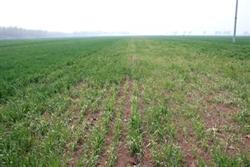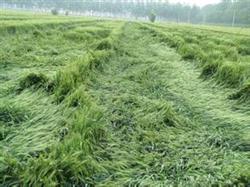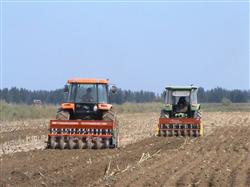Field Management techniques of Dryland Wheat in Spring

One is to crack down on the hoe and rake at the top. The combination of suppression and hoe can crush soil blocks, seal cracks, settle soil, increase soil moisture and preserve soil moisture, promote root development and improve the drought resistance of wheat itself. Dingling rake has the same effect, which can break the hardening of wheat field, close the cracks, form fine topsoil layer, prevent wind pumping, frostbite and dead seedlings, and reduce water evaporation in wheat field. In the northwest wheat area, both paddy land and dryland wheat fields should be raked in early spring. After thawing in spring, the soil of Wang seedling field should be deeply ploughed and cut root, and the wild growth should be controlled; the weak seedling field should be hoed shallowly to increase the soil temperature and promote the weak seedling to become strong. The second is to take advantage of soil moisture and fertilize in early spring. Using chemical fertilizer or opening ditches to apply nitrogen fertilizer after soil returning to pulp or light rain in early spring has a prominent effect on increasing the number of ears per mu and grains per ear, grain weight and yield. Those who do not apply phosphate fertilizer should apply diammonium phosphate to nitrogen fertilizer.
- Prev

Lodging control measures of wheat in spring
Lodging is one of the main factors affecting high and stable yield and good quality of wheat. Lodging mainly occurred in high yield wheat fields with abundant fertilizer and water, vigorous wheat growth, large population and heavy field cover. Early spring is the key period to prevent lodging of wheat. The comprehensive lodging prevention technical measures are: scientific operation of fertilizer and water...
- Next

Analysis of current Wheat Seedling situation and suggestions on Spring Management
The key to a bumper grain harvest is to improve the quality of sowing with seven-minute planting and three-part management. At present, spring wheat in our province is about to enter the sowing period, how to make a good sowing pass and improve the sowing quality is related to the overall situation of spring wheat harvest throughout the year. First, the selection of improved varieties to win high wheat yield, soil is the foundation, fertilizer is nutrition, water is the lifeline.
Related
- The first cup of black tea in spring, the flavor and history of tea gardens in Kenya, Africa
- The computer can not only choose potatoes, but also grow tea rice. AI will grow winter oolong tea champion.
- It is not only the inflated tea bitten by insects, but also engraved with the four seasons tea in Beipu.
- The Oriental Beauty Tea Festival in Zhuxian County takes the stage at the weekend to experience the plus-size feast of oil tea.
- & quot; Oriental Beauty Tea & Exploration of Emei in Hsinchu, the hometown of quot;
- The new variety of strawberry "Tainong 1" dessert is the first choice with mellow aroma. Crimson gorgeous
- History of Tea in Taiwan: from Wild Inner Mountain to Export Tea Garden
- Two types of Taiwan Oriental Beauty Black Tea won the British three-Star Award for Childhood Tea Xiang Zhang Jiaqi changed from pilot to champion tea maker.
- Banana species and varieties: the planting history of Taiwan Xianren banana and dwarf banana is long, is banana disease resistant?
- Coffee planting Technology: Qianjie Coffee from Seedling to harvesting

